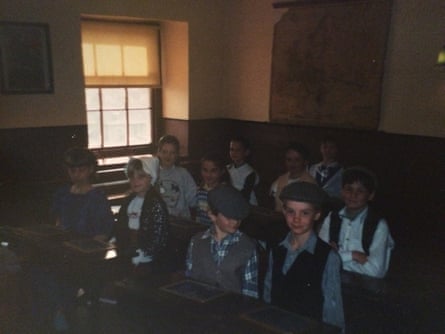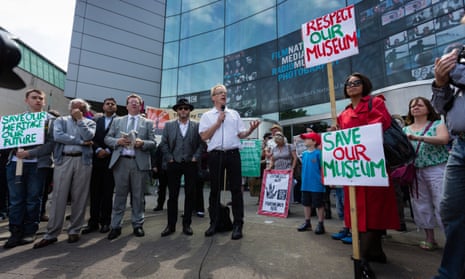It was my first time in a bonnet and easily the best school trip ever. Year 5; Judges’ Lodgings, the oldest house in Lancaster: home to the Museum of Childhood and its Victorian classroom. We had been learning about the 19th century all term and finally we were going to experience what it was like to go to back in time and face the cane.
The boys were in flat caps and waistcoats; I was a miniature Florence Nightingale in bonnet and shawl scavenged from a jumble sale in the local Scout hut. Our teacher, Mrs Potter, left her smile at home and led us in fierce dictation as we scratched away on slates with lumps of chalk. A picture shows us all putting on brave faces, spoiled rather by my friends Judith and Amy, who either sacked off the whole fancy dress thing, or forgot to tell their mums until it was too late to cobble together a crinoline petticoat.
My other favourite outing was to the National Museum of Photography, Film and Television in Bradford, latterly the National Media Museum (NMM), where you could pretend to present the weather forecast in front of a blue screen. It was also home to the UK’s biggest photography collection and the nation’s first Imax screen. We got a train over from Morecambe and watched a film about someone in a barrel going over the Niagara Falls, which was so realistic I ducked under the seat in front to avoid getting wet.

Getting told off at the Judges’ Lodgings or visiting the NMM has been a rite of passage for schoolchildren in the north of England for decades. But for how much longer? The Lancaster museum is one of five in Lancashire threatened with closure after the county council withdrew all of its funding as part of a proposed budget that aims to save £65m over the next two years because of central government cuts. It is not clear whether it will reopen for the 2016 season as planned on 1 April. The council insists it has received expressions of interest from groups in taking over the day-to-day operations. But it seems doubtful the Big Society will really step in to shoulder the £154,000 annual running costs, which don’t even include maintenance of the 18th-century town house.
Also facing the chop are the Museum of Lancashire in Preston; Fleetwood Museum on the Fylde coast; Queen Street Mill in Burnley; and Helmshore Mills Textile Museum in the Rossendale Valley in east Lancashire. In Durham, the county council intends to close the Durham Light Infantry Museum from 1 April. Nearly one in five regional museums closed a part or branch in the last year, according to the Museums Association, with those in the north of England disproportionately hit.
Already this year, the Haig Colliery Mining Museum in Whitehaven, Cumbria, has shut, just after the completion of an 18-month multi-million-pound restoration, followed by the wonderful Bede’s World in Jarrow. Where now will future generations learn about the Venerable Bede, a seventh-century polymathic monk who debunked the flat-Earth theory, twigged that the moon controlled tides and invented sign language?
In Bradford, the NMM still has an Imax but is soon to lose 400,000 of its most precious photographs to the V&A in London, which already has half a million photos of its own. That’s unless the 16 trustees of the Science Museum Group, which operates the NMM, come to their collective senses today when they meet to discuss this outrageous act of cultural pillage and refuse to wave it through.
The NMM tried to spin the loss of part of the Royal Photographic Society collection as good news, saying it would allow the Bradford museum to focus on the science and technology of light and sound. They even had the brass neck to suggest that the move would provide “the public and independent researchers with a peerless facility to access this consolidated national collection”.
Jolly good – if you live in London. But 87% of people in the UK don’t. The NMM is the number one tourist attraction in Bradford, one of the poorest cities in the country, which will soon have one of the youngest populations in Europe. Not all children are interested in science and technology: will they still want to visit when the rest of the photographic collection is spirited off to London, as many fear is its ultimate destiny? Will NMM survive at all when pitted against Manchester’s Museum of Science and Industry, far better connected by public transport and so important to George Osborne’s “northern powerhouse” agenda that he coined the phrase in a speech in one of the museum’s galleries?
In London the other week, I went to the National Portrait Gallery. The new exhibition, celebrating 100 years of Vogue, was sold out, despite tickets costing £19. The BP portrait award show was so full I had to queue to read each citation. Both exhibitions would transfer perfectly to the north of England: when the fabulous Bowes Museum in Barnard Castle staged a tribute to Yves Saint Laurent last year, visitor numbers shot up 44%. The north of England enjoys a rich cultural life but, if the cuts continue, it will be poor in more ways than one.

